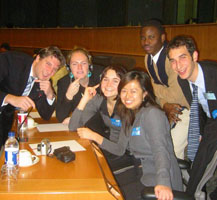
Maastricht; the city and it's history
Maastricht is the capital of the province of Limburg and one of the oldest cities in the Netherlands. With its rich heritage and wealth of historic monuments, it is a city with plenty to offer. The city has been shaped trough the centuries by arts and culture and has a layed-back southern atmosphere, complemented by a varied cycle of annual festivals and other events. To understand Maastricht today it is necessary to shortly dive into its past.
The history of Maastricht goes back to 50 BC, when the Romans built a settlement by the main road near a crossing in the river. The city's name still refers to this part of history, being derived from the Latin phrase ‘Mosam Trajectum' (place to cross the Maas). The crossing grew into a walled castellum, but was abandoned towards the end of the 4 th century. Later on the city became a bishop's seat. The first Bishop was Saint Servatius, who, according to legend, is still the protector of the city.
From the 13 th century on Maastricht was ruled jointly by the Duke of Brabant and the Prince Bishop of Liege. Because of its strategic importance as a crossing in the river it had to withstand many sieges from Dutch, Spanish and French forces. After exiting times of being a a city of importance and even the capital of a French province (under Napoleon) the city came into calmer waters. When, in 1839, Belgium and the Netherlands were seperated Maastricht fell into Dutch hands.
Nowadays Maastricht has about 120.00 citizens on an area of 5896 ha. It is situated between the rivers Maas and Jeker at the foot of the mount St Pieter. Major economic activities are commerce, services and industry (e.g. pottery, glass, paper and cement). Higher education is provided by the University of Maastricht and the Hogeschool Zuyd, providing studies in the areas of performing arts, translational studies and hotel manegement, amongst others.
number of European institutes have been set up in the city, e.g. the European Institute of Public Administration, the Europan Center for Work and Society and the European Center of Journalism. Since 1992 Maastricht is well-known as the city that give its name to the famous Maastricht Treaty, which provided the foundation for political, economic and monetary intergration in the European Union.
|




![]()



